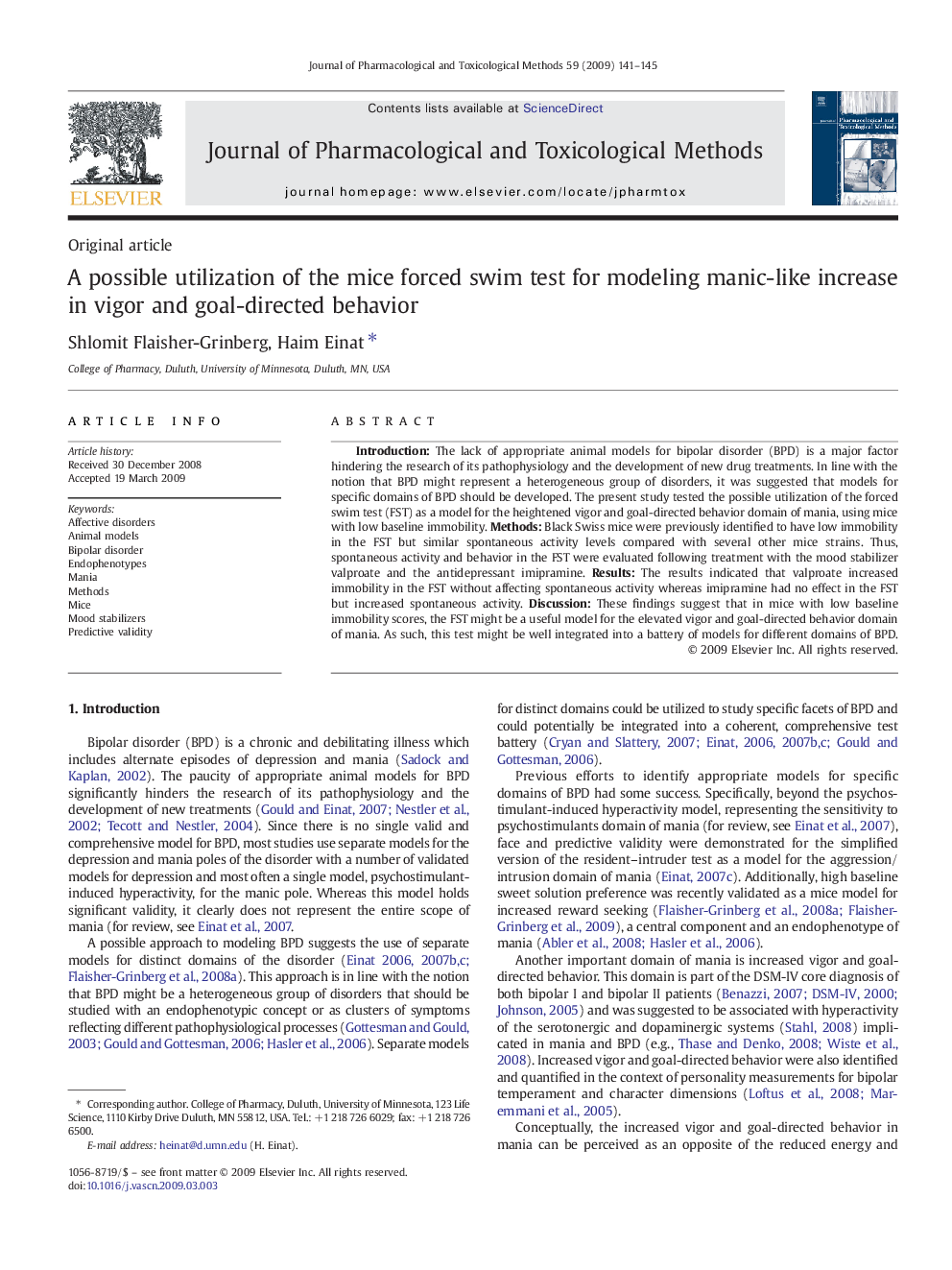| Article ID | Journal | Published Year | Pages | File Type |
|---|---|---|---|---|
| 2550224 | Journal of Pharmacological and Toxicological Methods | 2009 | 5 Pages |
IntroductionThe lack of appropriate animal models for bipolar disorder (BPD) is a major factor hindering the research of its pathophysiology and the development of new drug treatments. In line with the notion that BPD might represent a heterogeneous group of disorders, it was suggested that models for specific domains of BPD should be developed. The present study tested the possible utilization of the forced swim test (FST) as a model for the heightened vigor and goal-directed behavior domain of mania, using mice with low baseline immobility.MethodsBlack Swiss mice were previously identified to have low immobility in the FST but similar spontaneous activity levels compared with several other mice strains. Thus, spontaneous activity and behavior in the FST were evaluated following treatment with the mood stabilizer valproate and the antidepressant imipramine.ResultsThe results indicated that valproate increased immobility in the FST without affecting spontaneous activity whereas imipramine had no effect in the FST but increased spontaneous activity.DiscussionThese findings suggest that in mice with low baseline immobility scores, the FST might be a useful model for the elevated vigor and goal-directed behavior domain of mania. As such, this test might be well integrated into a battery of models for different domains of BPD.
